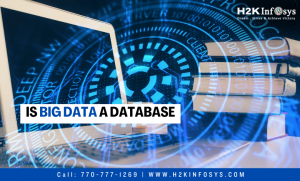Big data will be exactly defined as the data that may contain a variety that is arriving at increasing volumes with more velocity. Here the big data will be larger, more complex data sets and especially from the new data sources. These data sets are so voluminous that the traditional data processing software cannot handle them.
As the internet age will surge on what we create as an unfathomable amount of data every second, which we have denoted as simple as big data. The businesses and analysts who want to crack open all the different types of juicy information inside. There are different types of Big data they are classified as:
- Structured Big data
- Unstructured Big data
- Semi-structured big data
The structure of the data will be the key to not only how to go about working with it but also may produce. All the data goes through the process where it is called extract, transform and load as before it will be analyzed. Here the ETL process of data always varies.
- Structured Data
Structured data will be the easiest way to work with it as it is highly organized with the dimension that is defined as the parameters considered in spreadsheets as every piece of information is grouped into rows and columns. That will be specific elements that are defined as certain variables where the code will be easily discoverable.
This is all the quantitative data:
- Age
- Billing
- Contact
- Address
- Expenses
- Debit/credit card numbers
Here the big data structured data as will be already tangible numbers is much easier for the program to sort out and also collect through it out.
Structured data will be considered the easiest type of data to analyze as it will need little or no preparation before it is processed. A user might need to cleanse the data and pare it down to only relevant points as it is needed to be interpreted or may be converted too deeply before the true inquiry can be performed.
Here one major perk of using structured data will be the streamlined process of merging enterprise data with relational. Because the pertinent data dimension is usually defined as the specific elements which are in the uniform format.
- Unstructured Data
Unstructured data is all that is unorganized data. Everything we do with a computer generates unstructured data. No one will be transcribing their phone calls or maybe assigning semantic tags as they tweet as they send. While the structured data saves time in an analytical process that will be taking time and also effort gives the unstructured data some level of readability which is cumbersome.
The hardest part of analyzing unstructured data will be teaching an application to understand the information which is being extracted. Here more often that means a lot translating it into structured data. It is not easy and specifies how it will be done to vary from format and with the end goal of the analytics.
In contrast to structured data, the unstructured data will be placed in the data lakes to preserve the raw format of the data and all the information it holds.
- Semi-Structured data
This semi-structured data takes the line between structured data and unstructured data. Most of the time, it translates unstructured data with the metadata that will be attached to it. It is internal data that is collected in such a time, location, and device ID stamp or email address, or it may be a semantic tag attached to data later.
Semi-structured will split the gap between the structured and unstructured data which will be using the right datasets that can make it a huge asset. It may inform AI training and machine learning by associating patterns with the metadata.
Semi-structured data which has no set schema. This will be both a benefit and a challenge. It can be more difficult to work with as effort must be put in all to tell the application what each data point means.
Questions
- What is Big Data?
- Explain structured Big data type with example.






























One Response